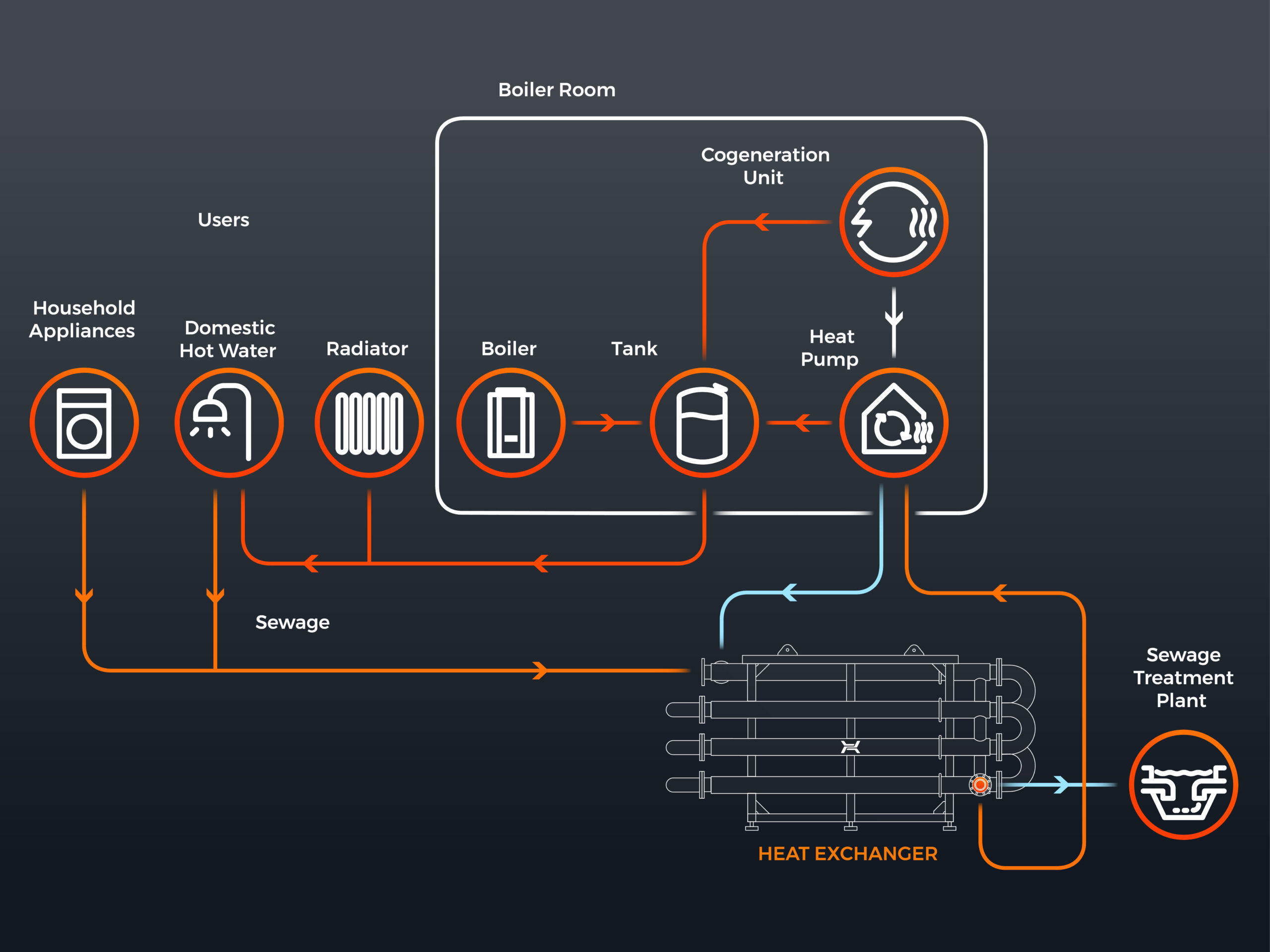Récupération de la chaleur des eaux usées
Selon les experts, l’électricité, obtenue en grande partie à partir de sources renouvelables, sera la principale source d’énergie pour le chauffage des bâtiments d’ici le milieu du siècle.

Selon les experts, l’électricité, obtenue en grande partie à partir de sources renouvelables, sera la principale source d’énergie pour le chauffage des bâtiments d’ici le milieu du siècle.

Its recovery is difficult due to the nature of the medium, which is a suspension of solid particles. It demonstrates high corrosive potential and tends to deposit on waste exchanger walls, thus causing deterioration of heat exchange conditions, and thus a decline in heat exchanger efficiency. The best product for this type of applications are Hexonic tube-in-tube heat exchangers.
The have a fully dismountable design, allowing for mechanically removing the deposit layer from the surface. Exchanger stainless steel ensures corrosion resistance and its simple design ensures failure-free operation. A single exchanger section consists of a smaller diameter tube (wastewater side) installed inside a larger diameter tube (water side). The whole exchanger is made of an appropriate number of sections connected in series and installed on a frame. The number of sections depends on the type and working parameters of the media.
